简体中文
繁體中文
English
Pусский
日本語
ภาษาไทย
Tiếng Việt
Bahasa Indonesia
Español
हिन्दी
Filippiiniläinen
Français
Deutsch
Português
Türkçe
한국어
العربية
DBG Markets: Market Report for Aug 04, 2025
Abstract:Market OverviewPressure is mounting on the Federal Reserve to begin cutting interest rates after last Fridays U.S. jobs report disappointed investors. Weaker-than-expected employment and manufacturing
Market Overview
Pressure is mounting on the Federal Reserve to begin cutting interest rates after last Friday's U.S. jobs report disappointed investors. Weaker-than-expected employment and manufacturing data have significantly increased the market-priced probability of a September rate cut, leading to a sharp reversal in the U.S. Dollar and a rally in assets like Gold. Meanwhile, global trade remains a key focus as a series of new U.S. tariffs and negotiated deals take effect this week.
Key Fundamental Drivers
1. U.S. Economic Data & Fed Outlook
Recent economic data points to a cooling U.S. economy, strengthening the case for monetary easing.
Non-Farm Payrolls (NFP): The economy added only 73K jobs in July, falling short of the 106K expected and showing only a marginal improvement from the previous month's 14K print.
ISM Manufacturing PMI: Inflationary pressures stagnated as the index came in at 48.0, below the expected 49.5 and indicating contraction in the manufacturing sector.
JOLTS Job Openings: Earlier in the week, job openings showed a slowdown, falling to 7.44M, which was lower than both the previous month and market expectations.
As a result, markets are now pricing in an 80.8% probability of a September rate cut, according to the CME FedWatch Tool. This indicates that the recent tariffs have not been as inflationary as initially feared.
2. Global Trade & Tariff Update
The complex web of U.S. tariffs continues to evolve:
Implementation Date: While many new tariffs were set for August 1, most have been administratively pushed to August 7. However, tariffs on Canadian imports began on August 1 as scheduled.
Specific Tariffs: A 50% tariff on semi-finished copper products became effective on August 1. Additionally, the “de minimis” tax exemption for imports under $800 will be removed on August 29.
Mexico: A last-minute 90-day extension was granted, preventing an immediate sharp increase, though existing 25% tariffs on certain goods remain.
China & UK: Both remain unaffected for now due to existing agreements. However, the U.S.-China deal is set to expire in less than two weeks, creating future uncertainty.
South Korea, Japan & EU: New deals were reached, resulting in a 15% tariff for most imports from these regions—lower than originally threatened.
Other Asian Nations: The U.S. has reached agreements or truces with Thailand and Cambodia and is reportedly close to a deal with Taiwan.
Market Analysis
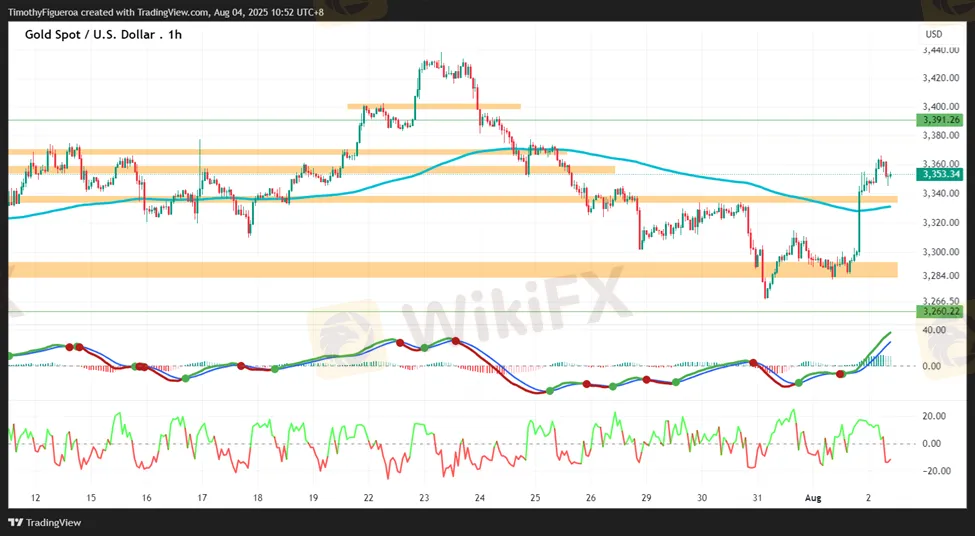
GOLD
Gold prices rose sharply after last weeks jobs report signaled a weaker U.S. labor market. The price broke through the EMA and a key resistance level, shifting the overall market structure to bullish.
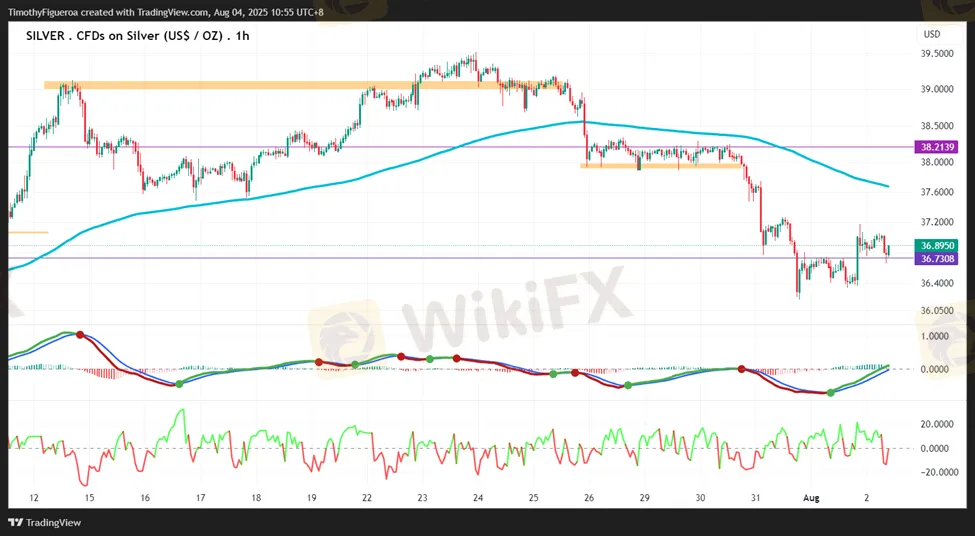
SILVER
Silver is lagging Gold and continues to consolidate at lower levels. Despite the MACD and RSI showing underlying buying momentum, the lack of a positive price response suggests weakness.

DXY
The Dollar is testing a critical support zone at the EMA200 and the previous low. The sudden sell-off, driven by fundamentals, is likely to continue. The MACD indicates more selling pressure is building, while a consolidating RSI at low price levels also points to growing bearish momentum. We expect more selling in the coming days.
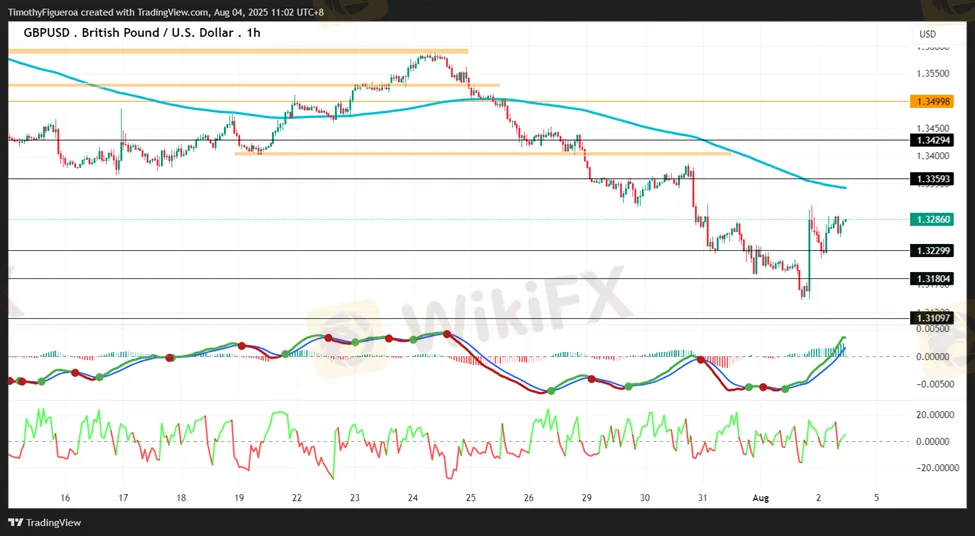
GBPUSD
The Pound is rising from its recent sharp low and is approaching the EMA200. The MACD shows strong buying volume, and the RSI is supporting this momentum. However, we will not call for a complete trend reversal until we see a clear break above the previous high point and the EMA200.

AUDUSD
The Aussie dollar is nearing the EMA200, with both the MACD and RSI showing bullish growth. We expect to see more buying in the near term, likely followed by a period of consolidation. A full trend shift has not yet been confirmed.
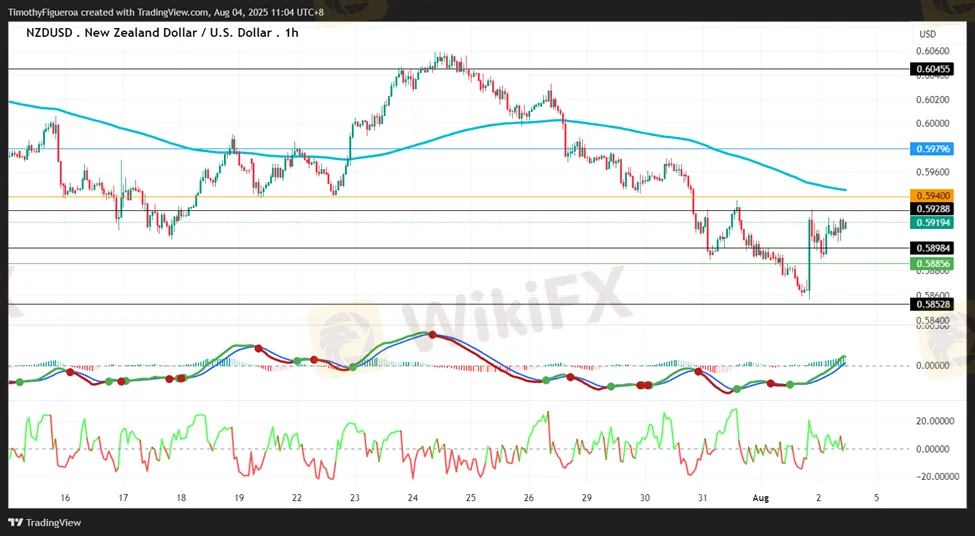
NZDUSD
The Kiwi also rose sharply last week, with the MACD and RSI showing a healthy increase in volume and momentum. While the long-term trend has been bearish, the strength of this reversal warrants caution for sellers. A break of key resistance could signal a larger recovery is underway.
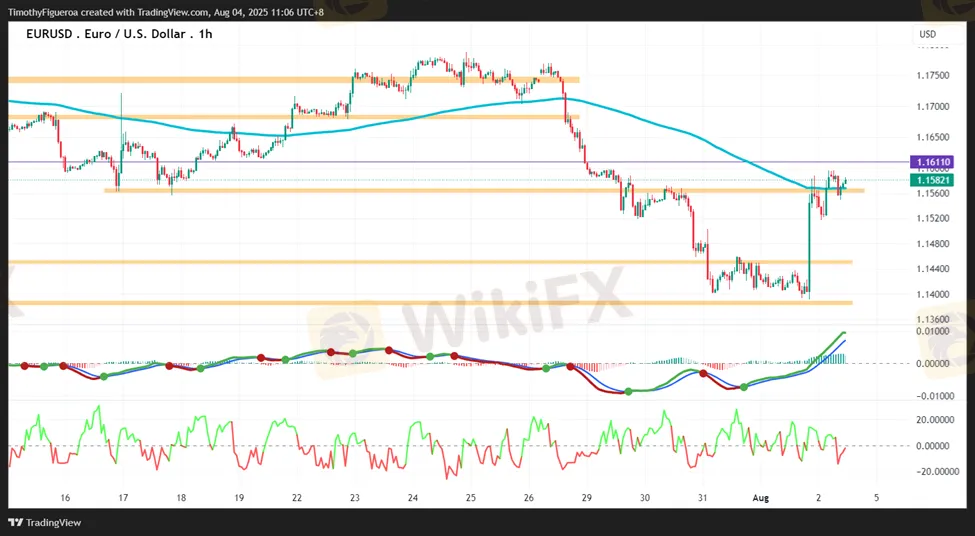
EURUSD
The Euro is now testing a key resistance boundary. A successful break above this level would signal an overall bullish shift in the pair's bias. The MACD and RSI indicate increasing buying momentum as the price challenges the EMA200. We are watching this market carefully for a potential trend change.
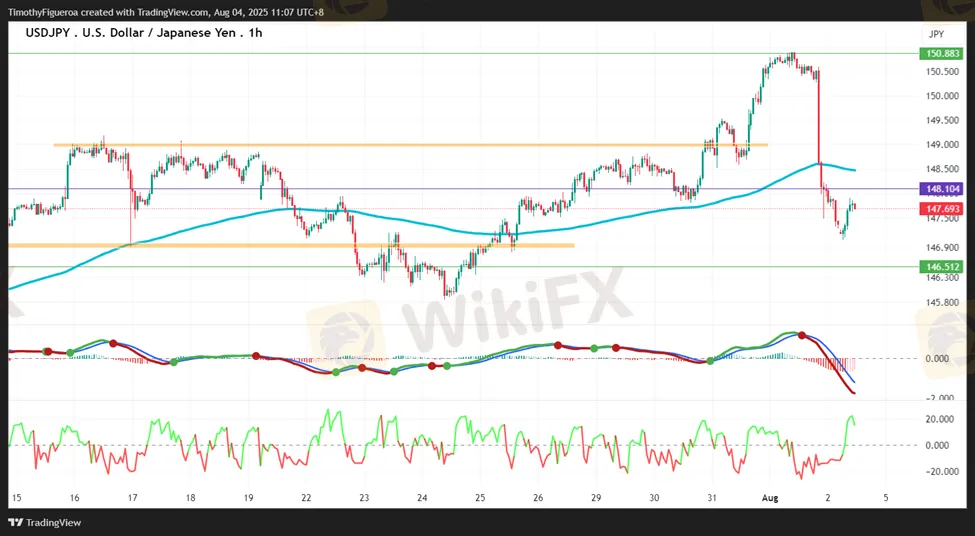
USDJPY
The Yen has strengthened significantly against the dollar, leading to a sharp sell-off in the USD/JPY pair. The move broke below a key support boundary, shifting the overall trend to bearish. The MACD and RSI confirm this selling momentum. We will continue to look for more bearish opportunities.
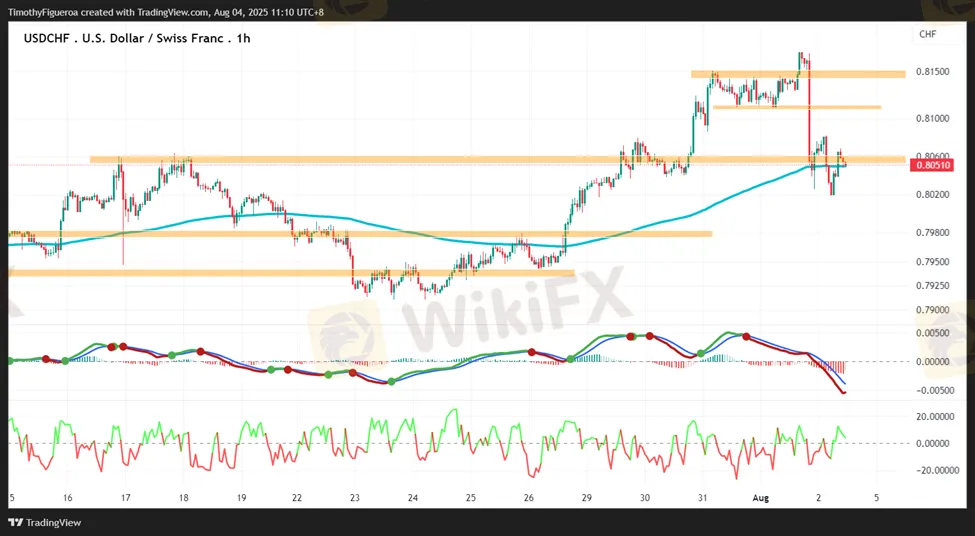
USDCHF
The Franc strengthened aggressively amid U.S. Dollar weakness, pushing the USD/CHF pair down to a key support zone. The MACD and RSI both point to a continuation of the drop.
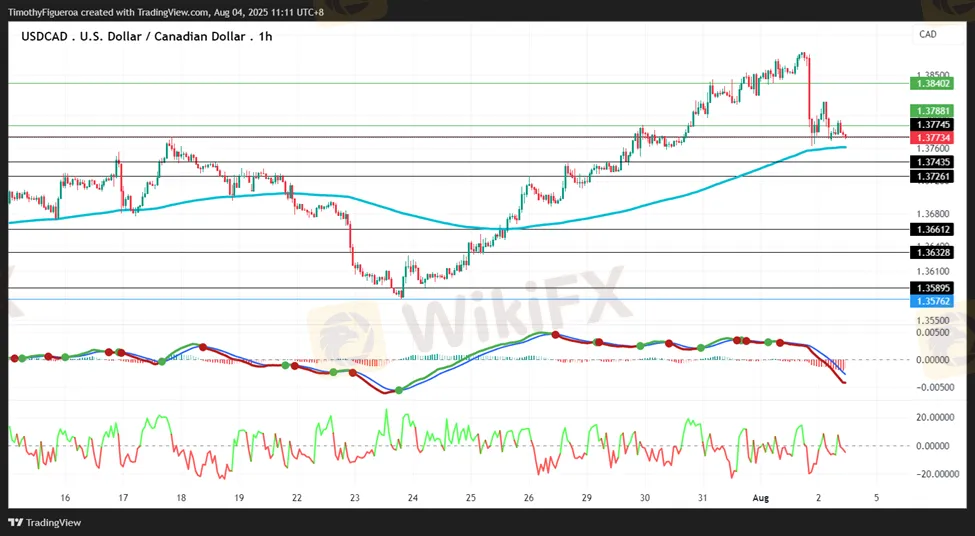
USDCAD
The USD/CAD pair has pulled back sharply from its high, with the MACD and RSI showing aggressive bearish growth. The price is now testing the EMA200. A crash below this level would confirm a bearish shift.
Disclaimer:
The views in this article only represent the author's personal views, and do not constitute investment advice on this platform. This platform does not guarantee the accuracy, completeness and timeliness of the information in the article, and will not be liable for any loss caused by the use of or reliance on the information in the article.
WikiFX Broker
Latest News
XS.com Broker Partnership Expands Liquidity with Centroid Integration
EC Markets: A Closer Look at Its Licenses
Housewife Scammed of RM68,242 in Online Investment Scam
From Charts to Profits: Unleashing the Power of Forex Trading Tools
FCA Publishes New Warning List! Check It Now to Stay Safe
Beware of Fake RS Finance: How to Spot Scams
Fortune Wave Solution: SEC Warns of Investment Scam
D. Boral Capital agrees to a fine as a settlement with FINRA
Is TD Ameritrade Safe? How to Spot Fake URLs and Stay Protected
Before You Trade with Quest: 6 Warning Signs to Know
Currency Calculator


